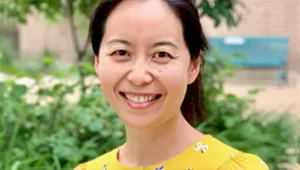Symposium (Speakers)

Bradley K Yoder, PhD
Dr. Yoder completed his undergraduate studies in biochemistry and molecular biology at the University of Maryland Baltimore County in 1988 and completed his Ph.D. in molecular and cellular biology from the University of Maryland in 1993. His postdoctoral studies were done at the Oak Ridge National Laboratory under the guidance of Dr. Rick Woychik, where Dr. Yoder was an Alexander Hollaender Distinguished Postdoctoral Fellow.
He joined the faculty in the UAB School of Medicine in 1997 as an Assistant Professor, was promoted to tenured Associate Professor in 2003, and Professor in 2007. He was appointed Chair of the Department of Cell, Developmental, and Integrative Biology in 2016 and is the inaugural holder of UAHSF Endowed Chair in Biomedical Research. In 2019, Dr. Yoder was selected as the recipient of the Lillian Jean Kaplan Award for Advancement in the Understanding of Polycystic Kidney Disease.
He is the Director of the U54 UAB Center for Precision Animal Modeling and of the U54 UAB Childhood Cystic Kidney Disease Center, and serves as chair of the Steering Committee for the national PKD Research Resource Consortium. In addition to research, he is active in training as the Director for the T32 Training Program in Cell, Development, and Molecular Biology and has trained 13 fellows and 21 doctoral students.
Dr. Yoder’s research over the past two decades has focused on the cellular and molecular mechanisms regulating assembly, maintenance, and function of the primary cilium utilizing complementary approaches in mice, C. elegans, and in cell culture models. Work from his laboratory has used genetic screens in C. elegans to identify proteins required for ciliogenesis and cilia mediated signaling activities and how these genes function in pathways that regulate life span and energy homeostasis.
His group has analyzed in mammalian systems how the cilium regulates critical developmental pathways and how the loss of the cilium causes abnormalities in left-right body axis specification, limb and tooth patterning, skin, and hair follicle morphogenesis, impairs endochondral bone formation, and roles for neuronal cilia in the regulation of satiation responses. The main focus of his group’s work over the past 20 years has been on how ciliary dysfunction alters injury and repair process in the kidney that lead to the formation of renal cysts.
Symposium (Speakers)

Bradley K Yoder, PhD
Dr. Yoder completed his undergraduate studies in biochemistry and molecular biology at the University of Maryland Baltimore County in 1988 and completed his Ph.D. in molecular and cellular biology from the University of Maryland in 1993. His postdoctoral studies were done at the Oak Ridge National Laboratory under the guidance of Dr. Rick Woychik, where Dr. Yoder was an Alexander Hollaender Distinguished Postdoctoral Fellow.
He joined the faculty in the UAB School of Medicine in 1997 as an Assistant Professor, was promoted to tenured Associate Professor in 2003, and Professor in 2007. He was appointed Chair of the Department of Cell, Developmental, and Integrative Biology in 2016 and is the inaugural holder of UAHSF Endowed Chair in Biomedical Research. In 2019, Dr. Yoder was selected as the recipient of the Lillian Jean Kaplan Award for Advancement in the Understanding of Polycystic Kidney Disease.
He is the Director of the U54 UAB Center for Precision Animal Modeling and of the U54 UAB Childhood Cystic Kidney Disease Center, and serves as chair of the Steering Committee for the national PKD Research Resource Consortium. In addition to research, he is active in training as the Director for the T32 Training Program in Cell, Development, and Molecular Biology and has trained 13 fellows and 21 doctoral students.
Dr. Yoder’s research over the past two decades has focused on the cellular and molecular mechanisms regulating assembly, maintenance, and function of the primary cilium utilizing complementary approaches in mice, C. elegans, and in cell culture models. Work from his laboratory has used genetic screens in C. elegans to identify proteins required for ciliogenesis and cilia mediated signaling activities and how these genes function in pathways that regulate life span and energy homeostasis.
His group has analyzed in mammalian systems how the cilium regulates critical developmental pathways and how the loss of the cilium causes abnormalities in left-right body axis specification, limb and tooth patterning, skin, and hair follicle morphogenesis, impairs endochondral bone formation, and roles for neuronal cilia in the regulation of satiation responses. The main focus of his group’s work over the past 20 years has been on how ciliary dysfunction alters injury and repair process in the kidney that lead to the formation of renal cysts.








